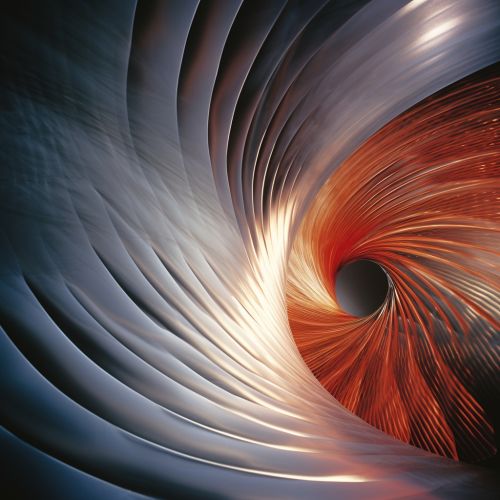Leading-edge vortex
Introduction
A leading-edge vortex (LEV) is a vortex that forms on the leading edge of a wing or airfoil moving through a fluid medium. This phenomenon is a key component in the study of fluid dynamics, particularly in the field of aerodynamics, where it plays a significant role in the generation of lift for flight in birds, insects, and aircraft.
Formation
The formation of a leading-edge vortex is a complex process that involves the interaction between the wing or airfoil and the surrounding fluid medium. As the wing moves through the fluid, it generates a pressure differential between the upper and lower surfaces. This pressure differential causes the fluid to flow around the wing, creating a swirling motion known as a vortex. The vortex that forms on the leading edge of the wing is the leading-edge vortex.
The formation of the leading-edge vortex is influenced by several factors, including the shape and angle of the wing, the speed of the wing through the fluid, and the viscosity and density of the fluid. In particular, the leading-edge vortex is more likely to form when the wing is at a high angle of attack, which is the angle between the wing's chord line and the oncoming airflow.
Characteristics
The leading-edge vortex is characterized by its strong, concentrated swirling motion, which is typically oriented in the direction of the wing's movement. This vortex is often associated with a high pressure region on the upper surface of the wing, and a low pressure region on the lower surface. The pressure differential between these regions generates lift, which is a key factor in the ability of birds, insects, and aircraft to fly.
The strength and stability of the leading-edge vortex can vary depending on the conditions of flight. For example, at low angles of attack, the vortex may be weak or non-existent. However, at high angles of attack, the vortex can become strong and stable, providing a significant amount of lift. This is particularly important for birds and insects, which often fly at high angles of attack.
Role in Lift Generation
The leading-edge vortex plays a crucial role in the generation of lift for flight. The vortex creates a pressure differential between the upper and lower surfaces of the wing, with a high pressure region on the upper surface and a low pressure region on the lower surface. This pressure differential generates lift, allowing the wing to rise.
In addition to generating lift, the leading-edge vortex also contributes to the stability and control of flight. The vortex can help to stabilize the wing against disturbances in the airflow, and it can also provide a means of control for the wing's movement. For example, by manipulating the strength and position of the vortex, a bird or insect can adjust its flight path and orientation.
Applications
The study of leading-edge vortices has numerous applications in the field of aerodynamics, particularly in the design of aircraft. By understanding the formation and characteristics of leading-edge vortices, engineers can design wings and airfoils that generate more lift, are more stable, and are more efficient.
One of the most notable applications of leading-edge vortex research is in the design of biomimetic aircraft, which are aircraft designed to mimic the flight mechanisms of birds and insects. By studying the leading-edge vortices generated by these creatures, engineers can develop new technologies and designs that improve the performance of aircraft.
See Also
References
1. "Leading-edge vortex improves lift in slow-flying bats", Science, 2008. 2. "The aerodynamics of hovering insect flight. VI. Lift and power requirements", Philosophical Transactions of the Royal Society of London. Series B, Biological Sciences, 1973. 3. "Leading-edge vortex lifts swifts", Science, 2004.


